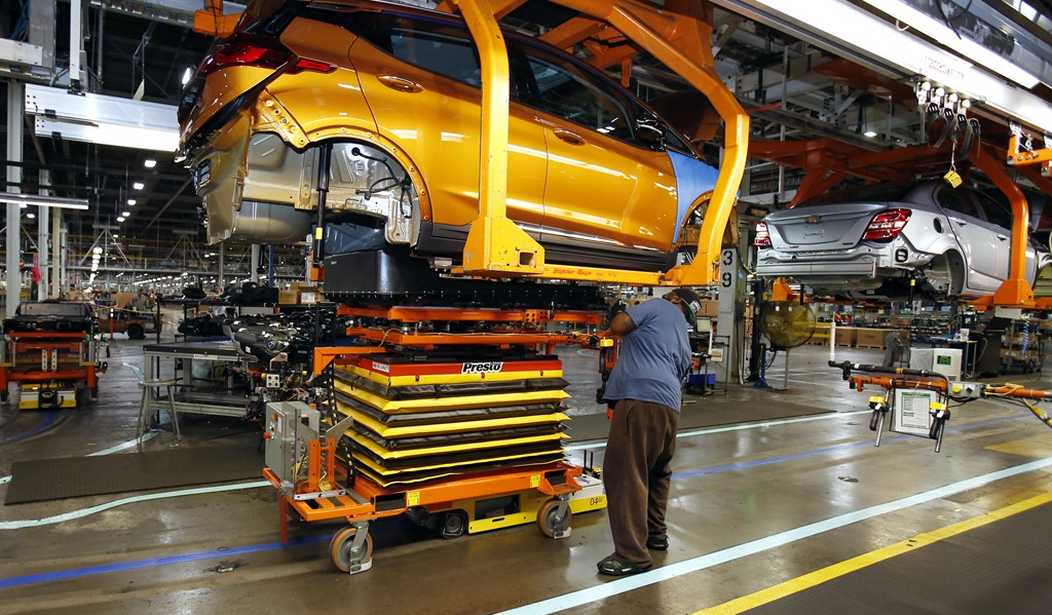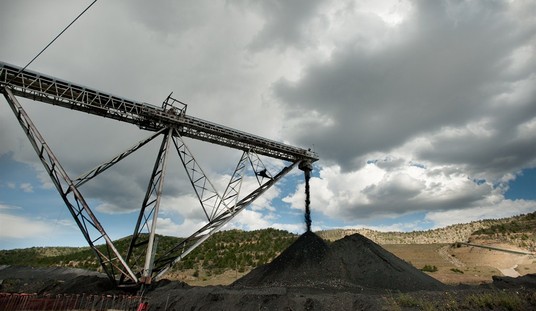How is it all going to shake out?
That’s what auto companies, the UAW, parts suppliers, battery makers, and the rest of the auto industry want to know as the Big Three automakers face the most challenging period in more than 100 years.
Not since Henry Ford created the manufacturing assembly line has there been such enormous upheaval in the designing, the making, and the selling of automobiles. And no one can see how the changes are going to roil management and labor in the coming years as the industry undergoes the transition from internal combustion engines to electric.
And thanks to Joe Biden and the climate hysterics in Washington, the transition is being unnecessarily hurried along. There is no earthly reason — even if you accept the theory of human-caused global warming — for the transition from gas-powered to electric vehicles to be so fast and so expensive.
New rules by the EPA would make gas-powered cars extinct before all the EV infrastructure — charging stations and mechanics to service them — is in place. The Alliance for Automotive Innovation called the EPA proposal a “de facto battery electric vehicle mandate” that was “neither reasonable nor achievable.”
The EPA thinks that by 2032, 67% of all new car sales will be electric. And we’re nowhere near ready for it.
This is a critical period in the history of the auto industry. With trillions of dollars of profits at stake, tens of thousands of jobs on the line, and to no small degree, the economy of the United States being at risk, how all these radical changes shake out will determine a generous slice of history over the next century?
Will personal modes of transportation even exist 100 years from now?
The world auto industry will invest about $1.2 trillion in this transition to electric over the next decade. More than half a trillion dollars is being spent on new plants.
The U.S. will need an influx of fast chargers to support the expected surge in plug-in vehicles on the road. Citing data from the federal National Renewable Energy Laboratory, the group of seven automakers said 182,000 fast chargers will be needed nationwide by 2030, up from around 32,000 today.
Traditional automakers for years were reluctant to invest directly in charging stations. But that has changed in the past few years as EV adoption becomes critical to their business strategies.
Mercedes MBGYY 0.74%increase; green up pointing triangle plans to install 10,000 high-powered fast chargers globally over several years, including about 3,000 in North America, the company said early this year. General Motors in 2021 outlined plans to spend $750 million on chargers in North America, although its recent Tesla deal will allow it to forgo some of that spending, the company said.
There are enormous investments that will be made in a little more than a decade. And now the UAW wants to wet its beak and grab some of that cash while the getting is good. And they aren’t likely to settle until they’re assured a generous piece of the EV pie.
“The transition to E.V.s is dominating every bit of this discussion,” said John Casesa, senior managing director at the investment firm Guggenheim Partner.
“It’s unspoken,” Mr. Casesa added. “But really, it’s all about positioning the union to have a central role in the new electric industry.”
Ford said in July that its electric vehicle business would lose $4.5 billion this year. If the union got all the increases in pay, pensions and other benefits it is seeking, the company said, its workers’ total compensation would be twice as much as Tesla’s employees.
Union demands would force Ford to scrap its investments in electric vehicles, Jim Farley, the company’s chief executive, said in an interview on Friday. “We want to actually have a conversation about a sustainable future,” he said, “not one that forces us to choose between going out of business and rewarding our workers.”
UAW President Shawn Fain doesn’t believe that all those profits are going into the EV transition. He thinks that the money is stuffed under Jim Farley’s mattress. He’s like a blacksmith 120 years ago who didn’t see the changing technology as a threat to his livelihood.
But the transition is coming whether Fain wants it or not. It may be unnecessary. It may end up being the biggest clusterfark in the history of U.S. business.
But it’s not going to be stopped.










